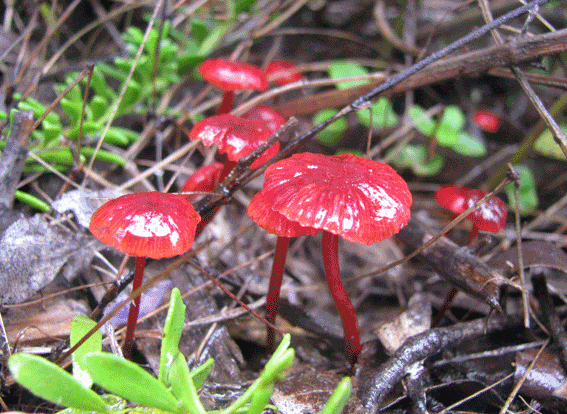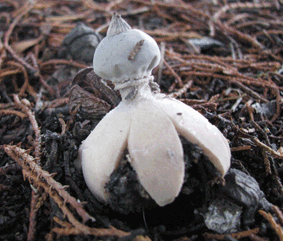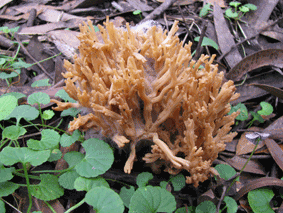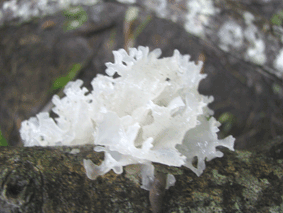Fantastic fungi
If I mention the word ‘fungus’, you may picture dark, slimy toadstools amid rot and decay. But to me, the world of fungi is one of jaw-dropping beauty – of many-coloured, weirdly shaped growths of amazing variety.
One of the benefits of living in a subtropical area that seems to have had more than its fair share of rain recently, is that I can go on fungal forays in my own backyard. A rotting wattle log houses blobs of clear jelly fungus, fairy rings appear on the lawn, little grey mushrooms spring up on stable manure and leathery orange and brown bracket fungi grow on tree stumps. The fact that some of these only last for a few hours makes them even more fascinating!
I find it hard not to wax poetic about this amazing kingdom. Finding mushrooms in your garden doesn’t mean there’s something wrong – it can be a sign that things are going very well indeed! Fungi help to break down organic matter to a form your plants can use. Some fungi grow from plant roots and extend the feeding and water-absorbing zones – sort of hair extensions for plants – and help to supply rarer nutrients. (One important exception to these good guys is Armillaria, or Honey Fungus. This disease-causing fungus, which forms honey-coloured colonies of mushrooms on tree trunks, can cause devastation through root-rot in orchards and gardens.)
Not only are fungi cycling nutrients through the garden, they are also important food sources for insects and animals such as bandicoots. There are native truffles – underground fungi – that form a substantial part of the diet of marsupials, including potoroos and pademelons. Fungi are often the first things to grow after a bushfire. Insects and animals then come to eat the fungi, leaving their droppings (and often seeds) behind and so helping to kick off the regeneration process.
Is it edible for you? As a general rule – assume no! The more I learn, the less I’m willing to take the risk. So many dangerous mushrooms look like delicious edible ones. Many Australian fungi are unknown and unnamed. If you are lucky enough to have an experienced forager take you to their favourite spot, lucky you! I was fortunate enough to have a friend living near Orange, NSW who took me to collect Slippery Jacks and Saffron Milk Caps (both introduced edible mushrooms that grow near conifers) along the roadside. We cooked our wild harvest on the barbeque with olive oil and garlic. I was in heaven!
In the garden and on bush walks, I don’t take the risk but instead limit my enjoyment to mushroom spotting and taking photos. Once you ‘get your eye in’, you’re bound to see beauty in the most unusual places.
Here’s a simple recipe that makes a lovely addition to an antipasto platter.
Marinated Mushrooms
- 250g of mushrooms (eg. field mushrooms or Swiss Browns) – halved if they’re small, quartered if large
- ½ cup olive oil
- ½ cup balsamic vinegar
- 2 or 3 cloves garlic
Crush or finely chop garlic; whisk together with oil and vinegar (or shake in a jar) until emulsified. Put mushrooms in a bowl, pour over marinade and stir. Cover and put in the fridge for at least 5 hours, stirring 2 or 3 times.
Tags: foraging, fungi, mushrooms, recipe
Posted in Kitchen







Leave a Reply